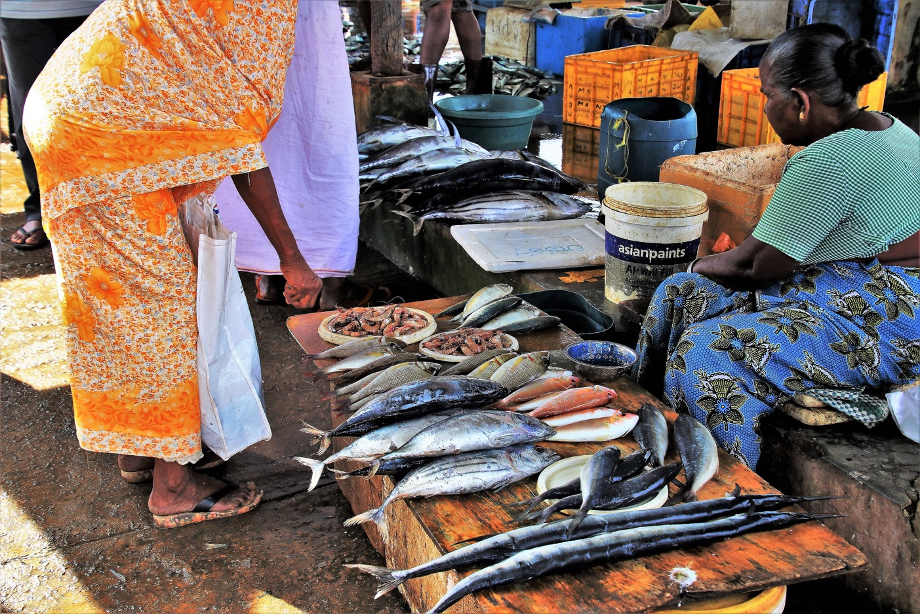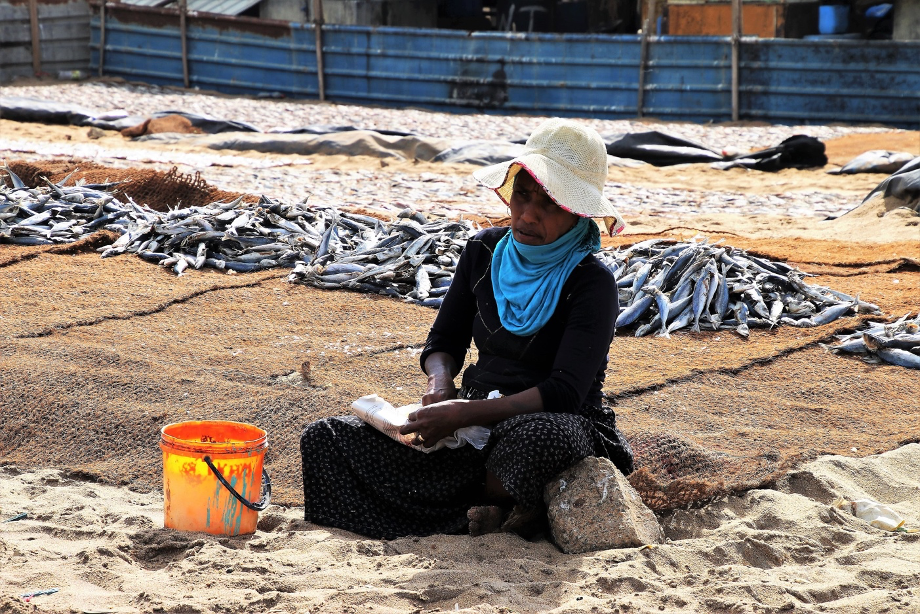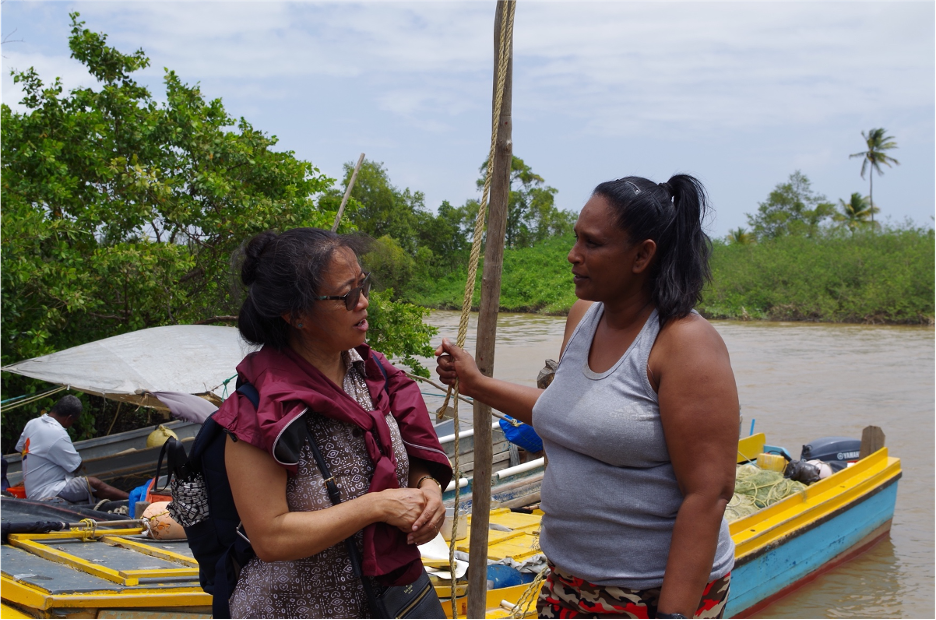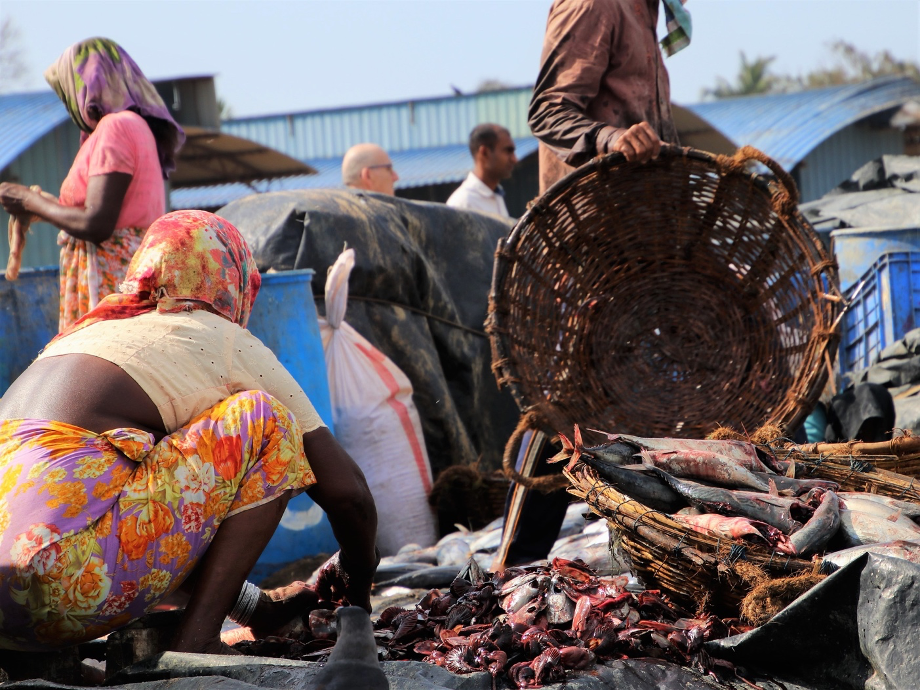Creating a new table: The invisibilization of female fisheries workers and a call for equity
By Gabrielle Lout

By Gabrielle Lout
It’s not enough to bring marginalized groups to the “table” if they took no part in the creation of the table in the first place.’
Junious Williams
Williams, a social justice practitioner, was speaking at the 2020 Conservation Alliance for Seafood Solutions Annual Meeting where he stressed the critical need to place equity, not just equality, at the center of how we approach the most complex social and environmental issues threatening our ocean and coastal communities. Without adequate attention to both equality and equity we face the possibility of initiatives that fail to create transformative change for the marginalized and/or vulnerable groups.
The terms equity and equality have been increasingly present as a result of necessary media attention to the inequities around race, gender, and migrant status present in our society – in our political system, industries, organizations, and practices. The resulting social justice movements have pressed us to rethink business as usual and prioritize diversity, equity, and inclusion.
This shift towards equity has been a growing focus in the global seafood industry following recent revelation of human and labor rights violations like trafficking and forced labor in fisheries. Industry efforts towards more socially responsible practices have been heavily focused on at-sea, harvesting operations and the protection of civil and political (CP) rights, with limited attention towards economic, social, and cultural (ESC) rights like the right to decent work, and women’s rights (Finkbeiner et al. In Review).
The need for equal protection of rights and equal participation in fisheries is urgent because women play such a considerable role in small-scale fisheries. Women account for almost half of the global small-scale fisheries workforce. While women make up eleven percent of small-scale fishers worldwide, they play a disproportionately large role in onshore, post-harvest subsectors engaging in sorting, processing, marketing, and sales. As a result, women play a substantial role in food security, from the household to the global level.

At the same time, women are expected to maintain their households, provide childcare, and in many cases, logistically and financially support their male spouse’s or relative’s work onboard vessels. Their work in fisheries is often seen as an extension of their household duties. The largely informal and underrecognized nature of women’s work in the sector results in poorly paid or unpaid positions with high levels of instability. Because of their socially prescribed role, women are more vulnerable to social, environmental, and economic changes making it ever more important to prioritize their needs.
The role of women in fisheries is gaining recognition with the inclusion of gender equity and equality in instruments like the Food and Agriculture Organization of the United Nations (FAO) Voluntary Guidelines for Securing Sustainable Small-Scale Fisheries and the supporting handbook, Towards gender-equitable small-scale fisheries governance and development. Fisheries stakeholders, including women, were actively involved in the bottom-up, participatory development of these pivotal instruments. Similarly, current tools to assess social responsibility in fisheries like Conservation International’s Social Responsibility Tool for the Seafood Sector and its associated protocol include specific guidance to assess gender like equitable opportunity to benefit, access to healthcare, and discrimination. While this progress is notable, there are still deficiencies integrating gender equity into management and policies.

Even with the inclusion of gender equity and equality in fisheries instruments, embedded inequalities exist that reinforce these deficiencies. Gender and social norms and common practices undermine women’s labor and exacerbate the notion that they are not equal actors. In other cases, women are unable to obtain fishing licenses and therefore access to fishing. They typically do not have access to loans to enter the industry or access the necessary gear, limiting their options for work in the sector. As a result, women are commonly left out of decision-making processes, trainings, or capacity development due to the perception that they are not equal stakeholders.
In a recent study I led assessing decent work in the shrimp and groundfish fisheries of Guyana, Suriname, and Trinidad and Tobago, women were identified to make up a significant portion of the workforce possessing equal opportunities to participate in the sector. Despite their known role in the fisheries, not a single woman was included in an extensive list of representatives or stakeholders drafted by governmental officials and fisheries officers leaving out a critical category of workers. This was a significant finding in itself, reiterating the reality that even when accounted for, women are less visible and more voiceless than their male equivalent.

While women are beginning to have a seat at the table, are we actually beginning to realize gender equity in fisheries or simply filling a gender quota without meaningful change?
The terms are often used interchangeably as they both promote fairness but clarifying the distinction between the two is increasingly crucial. Equality is defined by the International Labor Organization (ILO) as “enjoyment of equal rights, opportunities, and treatment by men and women and by boys and girls in all spheres of life.” Our most basic human rights are based on values such as equality, being defined and protected by law.
Equity, on the other hand, has the potential to be far more subjective. Equity is defined as the “fairness of treatment for women and men, according to their respective needs.” In other words, equity is about giving every individual what they need to derive the same benefits taking into account their relative ability to achieve them. Equity acknowledges that different groups are faced with their own barriers, or circumstances that inhibit their ability to benefit and therefore these groups require more attention or increased support.
Equality and equity may differ, but they are inextricably linked. They are bound – if equality is the end goal, then equity is the path to get there. Equality depends on equity. However, our efforts are typically more geared towards reaching that degree of “sameness” without actually leveling the playing field.
Our current sustainability efforts are hyper-focused on production and at-sea operations given its significant impact on the environment. Recent endeavors to advance human and labor rights including decent work in fisheries (for both men and women) is based on standards established by ILO Work in Fishing Convention (C188) which only addresses labor onboard vessels with only one mention of ‘women’. Popular market-based approaches such as fishery improvement projects (FIPs) and certifications are beginning to integrate social dimensions and attention to gender but are still primarily focused on interventions at the production level that is male-dominated.

One notable example which may provide a model for a variety of fisheries contexts is the arapaima (Arapaima spp.) co-management in the Brazilian Amazonia. In the region and the fisheries, gender roles and norms paralleled global trends. Here, women participate in subsistence fishing, domestic chores, and support fishing activities done by men. Co-management was the result of overfishing and poaching of the arapaima, one of the largest freshwater fish species and one of the most important commercial fishing resources in the Brazilian Amazonia. As part of the co-management, community members enforced access rules, counted arapaima populations, harvest fish, record catch information, transport fish for processing and to buyers. The shift to a communal system based on the division of labor resulted in women participating in diverse activities in which they were compensated. Furthermore, women participated in the capacity development activities, learning new skills and acquiring new knowledge. In this example, women could step out of their hidden roles and break some invisibility barriers through fair financial recognition, representation, and inclusion in decision-making.
If we are to take the challenge of gender equity in fisheries seriously, we must shift the perspectives away from a male-dominated sector to elevate the role of women. Realizing equity will require redefining fisheries management, leading to new innovative interventions and approaches that account for the underrecognized roles of women in the onshore, post-harvest subsectors. Learning from the case of the arapaima co-management, creating new roles and activities in which females are compensated fairly and are engaged in collective decision-making can be a useful tool to empower women and break down existing inequities and barriers. Similarly, current initiatives like decent work must explicitly incorporate women’s labor rights and reestablish minimum standards with diverse instruments beyond ILO C188. Finally, women must be involved in the design of such standards and interventions. Not just as participants, but leaders of the process.
It is clear that we simply cannot continue to approach fisheries with the same conservation lens or interventions that historically have not included women or our efforts for equity will not be sustained. We are making strides towards fairness and must ensure that women have what they need to derive the same benefits. This is where the work begins. Women are beginning to have a seat at the table, but perhaps…we just need an entirely new one.
 Gabby Lout is a doctoral student in the School for the Future of Innovation in Society. She graduated with a B.S. in Marine and Conservation Biology from Seattle University and received a M.A. in Global Leadership and Sustainable Development from Hawaii Pacific University. In all of her work, she is interested in finding innovative solutions for the complex socio-ecological challenges our marine environment is facing to protect the people who depend on it most.
Gabby Lout is a doctoral student in the School for the Future of Innovation in Society. She graduated with a B.S. in Marine and Conservation Biology from Seattle University and received a M.A. in Global Leadership and Sustainable Development from Hawaii Pacific University. In all of her work, she is interested in finding innovative solutions for the complex socio-ecological challenges our marine environment is facing to protect the people who depend on it most.
@GabrielleLout